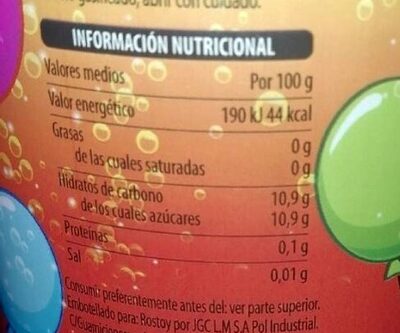Bebida sin alcohol - Rostoy Magic - 750 ml
Aquesta pàgina del producte no està completa. Podeu ajudar a completar-la editant-la i afegint-hi més dades a partir de les fotos ja disponibles, o fent-ne més amb l'aplicació de androide o iPhone / iPad. Gràcies!
×
Codi de barres: 8410261490014 (EAN / EAN-13)
Nom comú: Bebida refrescante de zumo de frutas gasificada
Quantitat: 750 ml
Empaquetament:
en:Bottle, en:Green dot
Marques: Rostoy Magic
Categories: Begudes, Begudes sense alcohol
Etiquetes, certificacions, premis:
Lliure de gluten, Punt verd, Sense alcohol
Botigues: Mercadona
Països on es va vendre: Espanya
Matching with your preferences
Entorn
Empaquetament
Transport
Report a problem
Fonts de dades
Producte afegit per kiliweb
Última modificació de la pàgina del producte per alia.
La pàgina del producte, també editada per musarana, roboto-app, yuka.WWE5Y1RKc3IrY3NqcS9FZ29UUFkydmRlbjRYNFVXV0hJc1lSSVE9PQ, yuka.sY2b0xO6T85zoF3NwEKvlnV3T4b5nx3YNBn4gUGLx--QDIC5YtVCxKj8K6g, yuka.sY2b0xO6T85zoF3NwEKvlnxpTvvFoSLtCCLjwHKm2sijdpbQcIlUvrOrIag.








